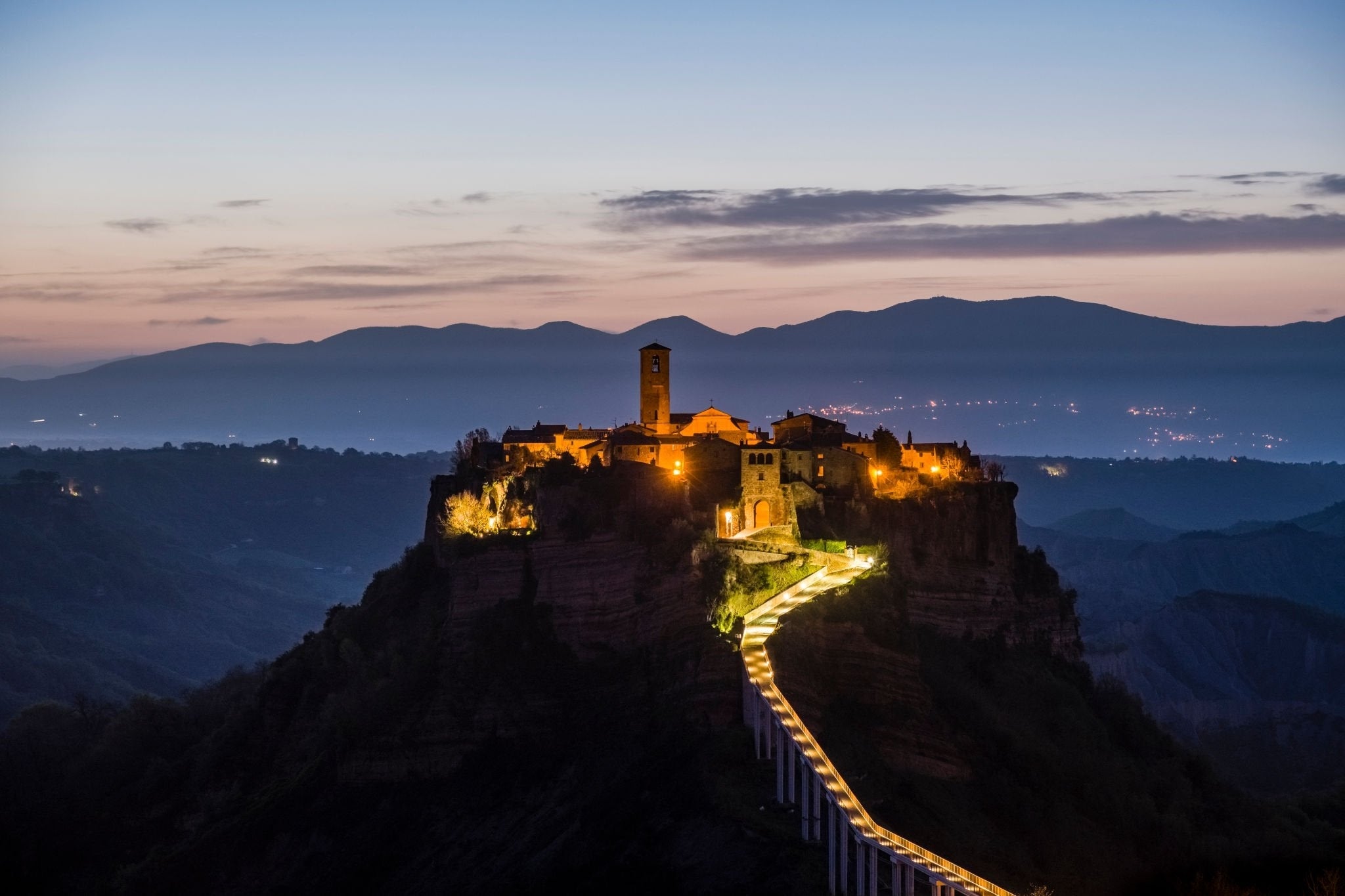Lazio Uncovered

Five must-see spots beyond Rome
Lazio Uncovered
By Gabriela R. Proietti
December 04, 2023
Overlooked by neighboring regions like Tuscany and Umbria, Lazio is full of rich history, beautiful landscapes, ancient Roman ruins, stunning coastlines, and local cuisine, making it one of my favorite regions in Italy and one most certainly worth visiting. Although most visitors end up in Lazio while touring the capital city of Rome and neighboring Vatican and then move on to a new destination like Florence or the Amalfi Coast, there is a world outside the ancient city walls worth exploring, from culture excursions to relaxing island getaways, that fit every traveler hopes and desires.
Discover five spots to add to your bucket list on your next Italian getaway.

Ponza
Did you know the region home to the ancient city of Rome is also home to one of the most beautiful islands in Italy? You don't have to travel south to the Amalfi Coast or fly to Sicily for an island weekend escape. Ponza is a lovely island in the Tyrrhenian Sea, part of the Pontine Archipelago. Ponza is small in size and is notorious for its crystal-clear waters, stunning cliffs, and picturesque coves. The turquoise color of the sea is captivating, and it's always recommended exploring by boat and sun bathing under the sun. Some of the island's most popular attractions include the Grotta Barbarossa, a sea cave filled with colorful fish and stalactites, the Faro di Ponza lighthouse, and the pretty old town of Ponza, with its narrow streets and quaint restaurants. The island is also famous for its fresh seafood, local trattorias, and laid-back nightlife vibes. Ponza is the perfect destination for a peaceful and rejuvenating getaway with its idyllic scenery and relaxed atmosphere that is just a short ride from Rome.


Civita di Bagnoregio
I first discovered Civita di Bagnoregio around Halloween, and the spooky vibes fit the occasion. Often referred to as the "Dying Town" or the "City that is Dying,” Civita di Bagnoregio is a small medieval town located in the province of Viterbo. The town sits on top of a plateau of volcanic rock, and over the years, erosion has caused the land beneath to crumble away, leaving Civita di Bagnoregio isolated from the surrounding area and has become a precarious location. The town can only be reached by a pedestrian bridge (so if you’re afraid of heights, close your eyes!) and vehicles are not allowed within its limits. This has helped to preserve its historic character and charm. The narrow, cobblestone streets are lined with ancient buildings and homes, many of which date back to the medieval period. Despite its name, Civita di Bagnoregio is not completely abandoned. There are a few residents who still call it home, and efforts have been made to preserve the town's unique heritage.

Tivoli
One of my favorite hidden gems in Lazio is hands down Tivoli. Just a short car ride from Rome, the town of Tivoli is best known for its historic villas and gardens, most importantly Villa d'Este and Hadrian's Villa. Villa d'Este is a UNESCO World Heritage Site and is famous for its magnificent Renaissance garden and is considered one of the finest examples of Italian garden design. The villa was built in the 16th century and the garden of Villa d'Este is the highlight of the estate, featuring terraces, fountains, waterfalls, frescoes, sculptures and a large central pool. After paying a visit at Villa d’Este, head to Hadrian's Villa, also known as Villa Adriana. This large Roman archaeological complex was built by Roman Emperor Hadrian in the 2nd century AD as his retreat from Rome. The villa was designed as a luxurious and extravagant complex, showcasing the wealth and power of the emperor, and has also become a UNESCO World Heritage Site.


Sperlonga
Just over an hour's train ride from Rome, Sperlonga welcomes you to taste local paradise. This small coastal town located in the province of Latina, is situated on a cliff overlooking the Tyrrhenian Sea, about halfway between Rome and Naples. Sperlonga is known for its picturesque white-washed houses, narrow streets, and beautiful beaches. The town's historic center is perched on a rock, giving it a unique and charming atmosphere overlooking the sea from above. Visitors can explore the medieval streets, visit the Church of San Rocco, or relax in one of the many clean beaches with umbrellas and lounge chairs. The town's beach promenade is lined with seafood restaurants, beach clubs, and artisanal shops selling local products. If you don’t come for the beach, one of the town’s main attractions is the Villa di Tiberio, a Roman villa built for the Emperor Tiberius in the 1st century BC. The villa is now a museum and houses a collection of ancient sculptures and artifacts. The nearby Grotta di Tiberio is a natural cave that was connected to the villa and is said to have been used by Tiberius for banquets.

Subiaco
Aside from beautiful beaches and ancient Roman artifacts, the region of Lazio offers national parks, unlimited greenery, and fresh air. Subiaco is a town located about 70 kilometers east of Rome, in the Simbruini Mountains. The town is known for its picturesque setting, nestled in a valley between two mountains and overlooking the Aniene River. Subiaco is most famous for its historic and religious sites. The town is home to the ancient Subiaco Abbey, which was founded in the 6th century and is one of the oldest monasteries in Italy. The abbey is famous for its two beautiful churches, the Basilica di Santa Scolastica and the Sacro Speco, both of which feature stunning frescoes and architectural details.


In addition to its religious sites, Subiaco is also a popular destination for outdoor activities. The surrounding mountains offer opportunities for hiking, mountain biking, and rock climbing. The area is also known for its natural beauty , with picturesque waterfalls and scenic landscapes.





